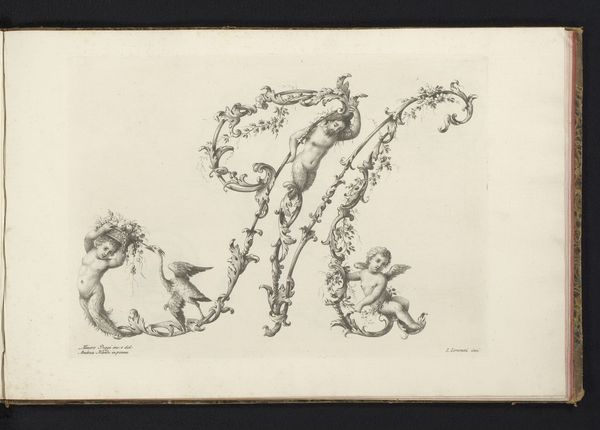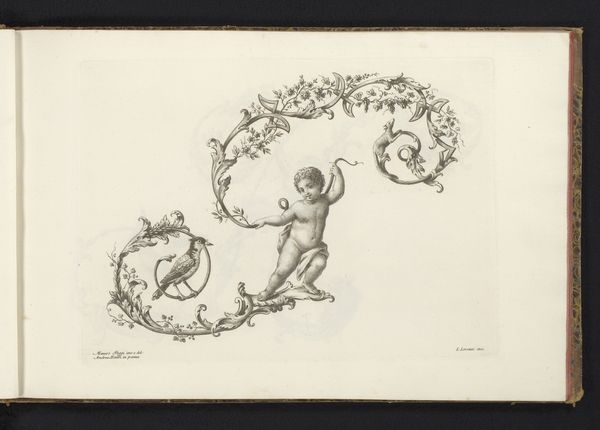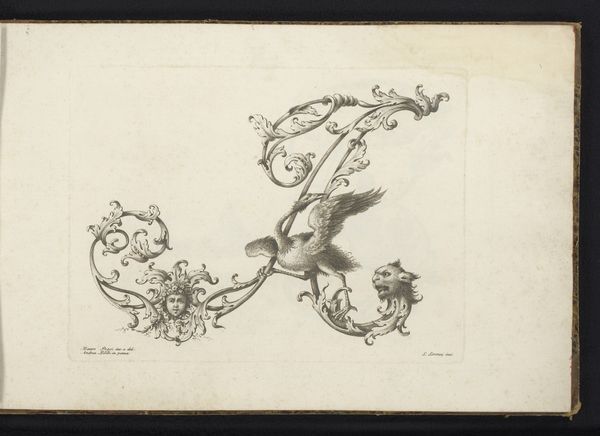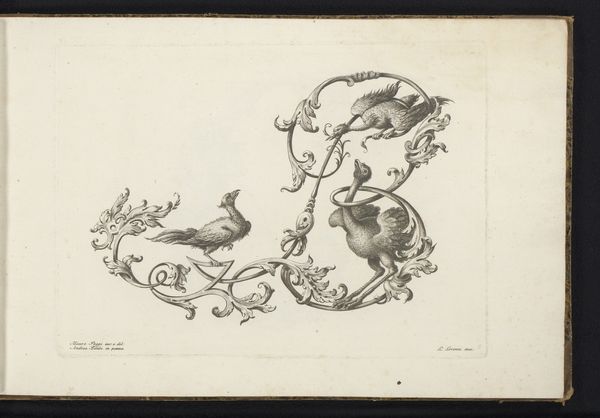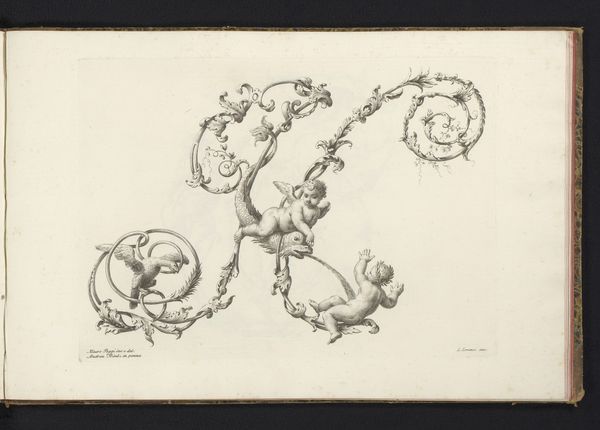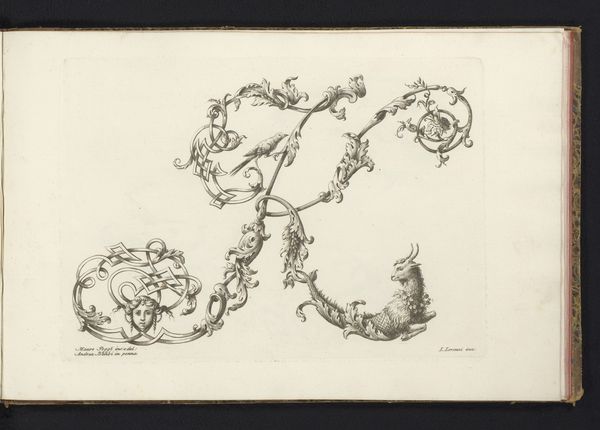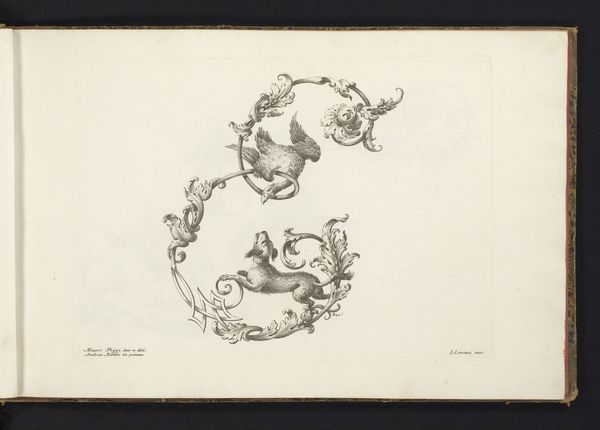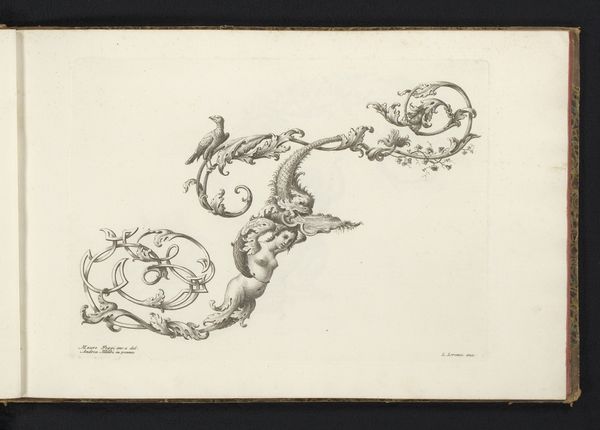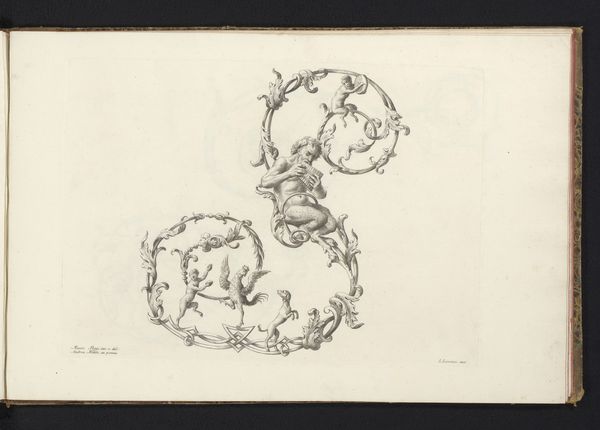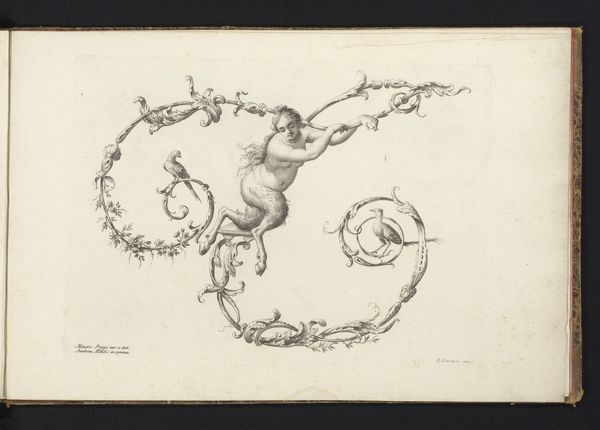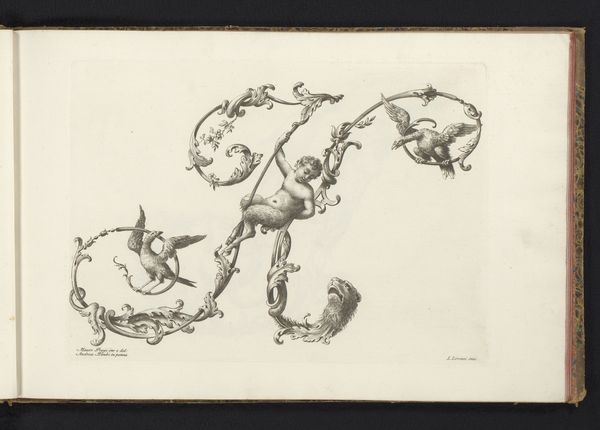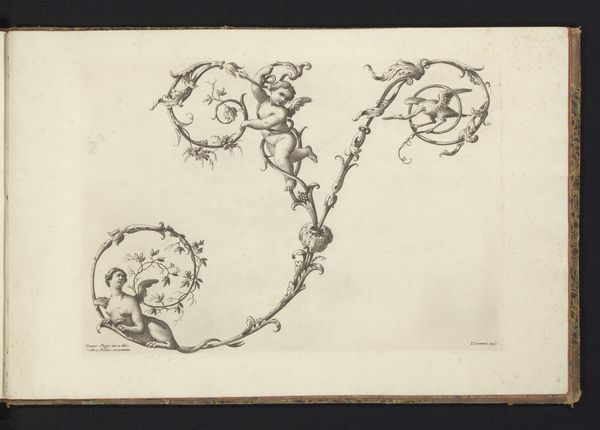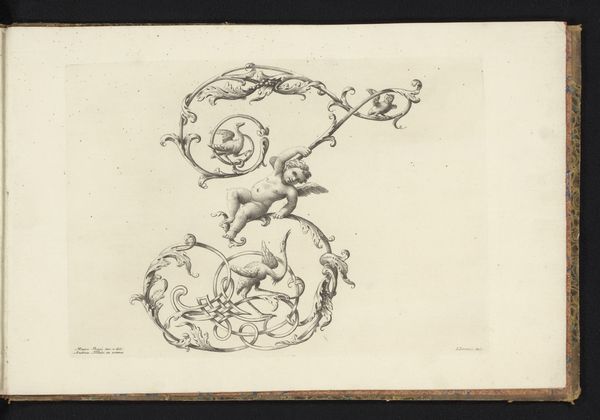
drawing, pen
#
drawing
#
allegory
#
pen drawing
#
pen sketch
#
sketch book
#
hand drawn type
#
figuration
#
form
#
11_renaissance
#
personal sketchbook
#
pen-ink sketch
#
thin linework
#
line
#
pen work
#
sketchbook drawing
#
pen
#
decorative-art
#
sketchbook art
Dimensions: height 228 mm, width 315 mm
Copyright: Rijks Museum: Open Domain
Curator: Look at this remarkable pen drawing, "Ornamentele letter D," created by Lorenzo Lorenzi sometime between 1745 and 1765. The artwork is currently held at the Rijksmuseum. What is your first take? Editor: There’s something whimsical yet unsettling about it. The precise lines give it a refined air, but the fantastic creatures make it feel almost dreamlike, perhaps even nightmarish. Curator: It's fascinating to see how Lorenzi blends naturalistic forms with these imaginative allegorical elements. Take the hybrid figures, for example. They echo motifs found in ancient mythologies and Renaissance emblem books, repositories of codified knowledge. The symbolism in bestiaries assigned meaning, creating visual lexicons. Editor: Exactly. It invites a deconstruction of power dynamics. I am interested in that woman-creature bearing flowers on one side versus that beast ridden by the bird, framed inside a fancy border. Who has agency? What meanings do the animals or these half-human figures represent in that historical moment? It provokes questions of who is deemed 'civilized' versus 'monstrous,' who benefits, and who pays. Curator: You’ve hit on the core tension within ornamental designs of this period. They are both decorative and deeply coded with symbolic meaning. Consider that intricately drawn “D.” Its baroque flourishes don’t merely serve aesthetic ends. These swirling patterns carry echoes of classical forms, power, and empire, reworked and repurposed. Editor: Right, but repurposing for whom? Luxury and artistic exploration for some were built upon systemic oppression for others. So these symbols and imagery can simultaneously reflect beauty and serve to obfuscate less savory realities in Europe. These decorations appear alongside burgeoning colonial endeavors elsewhere. I want to see it through this more inclusive, historically informed lens. Curator: A vital reminder that images carry multitudes within them and extend far beyond their surface. And in the process of revisiting images through time, what it reveals. Editor: I agree. Thinking about power structures implicit here really makes you question seemingly innocent artistry in entirely new ways.
Comments
No comments
Be the first to comment and join the conversation on the ultimate creative platform.
